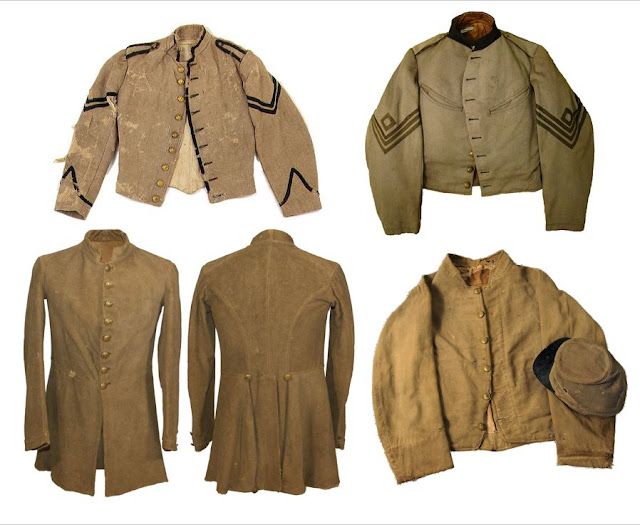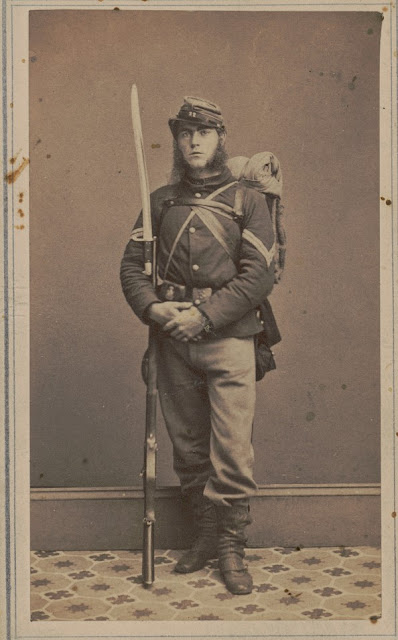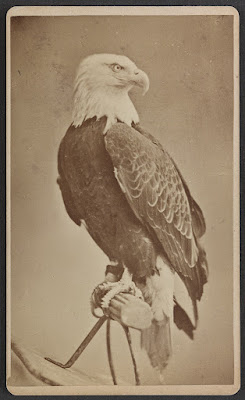Running the Vicksburg Batteries in the Forest Queen
General Ulysses
S. Grant recalled in his Memoirs how “when it was first proposed to run
the blockade at Vicksburg with river steamers [in April 1863], there were but
two captains or masters who were willing to accompany their vessels and but one
crew. Volunteers were called for from the army who had had experience in any
capacity navigating the western rivers. Captains, pilots, mates, engineers, and
deck hands enough presented themselves to take five times the number of vessels
we were moving through this dangerous ordeal. All but two of the steamers was
commanded by volunteers and all but one so manned.”
The only vessel with an all-civilian crew was the steamboat Forest
Queen under the command of Captain Daniel Conway. As the fleet tried to
drift past Vicksburg, alert Confederate gunners discovered them and after
lighting a house on the opposite side of the river afire, pounded the fleet
with shell after shell. Billy Blanker, clerk aboard the Forest Queen, proudly gave
the following description of how the civilians handled their first time under
fire.
“During the engagement, Captain Conway stood nobly at his
post upon the hurricane deck, smoking his cigar and giving his orders as coolly
as if the iron tempest that howled around him was nothing more than a summer
shower. The pilots also stood up to their work like men, both of them remaining
in the pilothouse until we landed below Vicksburg. The engineers stood like
iron men to their posts, running the boat a mile and a half after the steam
pipe was shot away. In short, all hands acted like brave men and there was no
flinching on the part of anyone.”
The Forest Queen, riddled with shot and its steampipe
shot away, made it past Vicksburg under the tow of the gunboat Tuscumbia
with three men scalded but otherwise ready for service ferrying Grant’s army from
the Louisiana side to the Mississippi side of the river.
Billy Blanker’s letter, written the morning after the Forest Queen ran the gauntlet at Vicksburg, first was published in the April 30, 1863, edition of the Aurora Journal in his hometown of Aurora, Indiana. Blanker, a native of Germany, had married Captain Conway's daughter Mary in 1861.
On board
steamer Forest Queen, below Vicksburg, Mississippi
April 17, 1863
Mr. Editor,
I feel in duty bound to give you a few particulars of the Forest Queen’s running of the blockade past Vicksburg. At 9:30 p.m. on the 16th, an order came from Admiral Porter to leave our moorings, go out in the stream and form in line as follows: six ironclad gunboats, then the transports: the stern wheeler Silver Wave, the Forest Queen, the Henry Clay, with the gunboat Tuscumbia bringing up the rear.
Our crew
consisted of:
Captain
Daniel Conway
Pilots John L. Conway and James M. Miller
Clerk Billy Blanker
Chief Engineer
Wilson Johnson of Madison, Indiana
Assistant Engineers
Joseph Aust of Louisville and A.L. Gale of Madison
Mate L.P.
Noble of Vevay, Indiana
Carpenter Z.
Lamb of Memphis
Watchman
Owen Conley of Cincinnati
Cabin boys
David Scott of Memphis and Henry Norman of New Orleans
Firemen Frank
Thompson of New Albany, Indiana, Lewis Craig of Gallipolis, Ohio, James Wells and
‘N- Bill’ of Memphis, all colored
Deck hands
Henry Dickman of Cincinnati, Dennis McDermot of Cairo, Illinois, W. Wheeler, H.
Colman, W. Green, and ‘N- Reuben’ of Memphis.
 |
| Clerk William Charles "Billy" Blanker Forest Queen |
We were also accompanied by P. Burke,
a private in Co. D of the 8th Missouri Infantry who “wanted to see
the fun” and he saw it. He says that he has been in eight battles and this was
the heaviest fire he ever faced. The crew of the Silver Wave were all
soldiers except the captain whose name is McMullen. I am only acquainted with
the pilot of the Henry Clay, John Taylor formerly of Aurora, Indiana.
I said we started at 9:30 p.m., the
gunboats in the lead under the immediate command of Admiral Porter, the whole
fleet slowly drifting down the river. When within a mile of the upper battery,
the pickets gave the alarm and soon the signals at the different batteries gave
notice that they were prepared for us. The ball soon opened and the rush of the
solid shot and screeching of shells mingled with the roar of the cannon made
awful music for our civilian ears. Still we got along pretty well until just as
we turned the point when the Rebels set fire to a frame house on the Louisiana
side of the river which lighted up the river as bright as day.
They were thus enabled to distinguish
between the gunboats and the transports and their shots soon began to tell. A
shot took away a part of our pilot wheel and cut the bell ropes communicating with
the engine. Thus disabled, the boat swung around with her bow upstream. But
Captain Conway, learning what was the matter, gave his orders through the
speaking trumpet and soon got her headed downstream again.
Just then, the whistle of the Henry Clay sounded and
looking in that direction, I saw her enveloped in smoke and steam. This was the
last we saw of her as she burned in a few minutes. I learned subsequently that
her pilot John Taylor got ashore safely. We were making good time down the
river when we came within range of their crossfire. Then the shots seemed to
come from every direction: through the stern, across the bows, etc. Well, I
thought it was raining shot and shell and if you see the riddled Queen
you would think so yourself.
 |
| The gunboat Tuscumbia took the Forest Queen under tow when the transport's steampipe was shot away and brought the vessel safely past the Vicksburg batteries. |
We had nearly got past when a 12-lb shot cut off our steam
pipe, robbing us of our motive power and scalding some of our men. We were
under good headway and floated past the batteries when the Tuscumbia took
us in tow and landed us tow miles above with Warrenton batteries within our own
picket lines and in sight of Vicksburg.
During the engagement, Captain Conway stood nobly at his post
upon the hurricane deck, smoking his cigar and giving his orders as coolly as
if the iron tempest that howled around him was nothing more than a summer
shower. The pilots also stood up to their work like men, both of them remaining
in the pilothouse until we landed below Vicksburg. The engineers stood like
iron men to their posts, running the boat a mile and a half after the steam
pipe was shot away. In short, all hands acted like brave men and there was no
flinching on the part of anyone. Our casualties are Carpenter Z. Lamb, badly
scalded, D. Scott and P. Burke slightly scaled; the rest of us escaped without
a scratch.
As soon as the Warrenton batteries are silenced and we get our steampipe fixed, we shall go down to New Carthage.
Source:
Letter from
Clerk Billy Blanker (William Charles Blanker), S.S. Forest Queen, Aurora Journal (Indiana),
April 30, 1863, pg. 2











Comments
Post a Comment